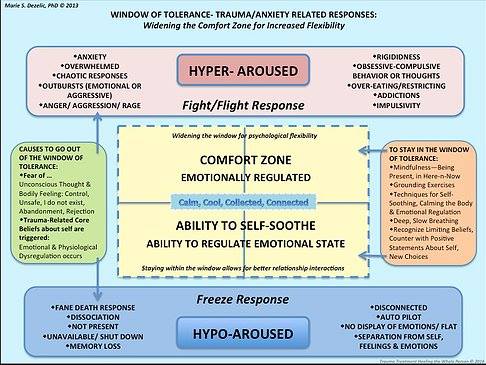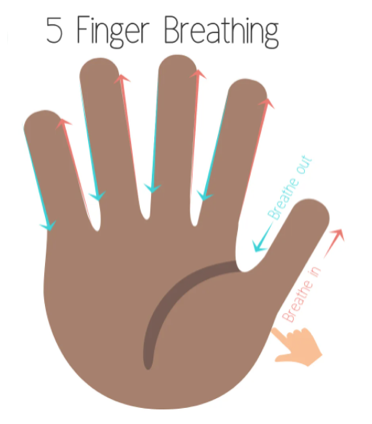We are all in the same storm, but we are in different boats (Words written by Damian Barr about the Coronavirus but reinterpreted by a Mum at Kynde!)
Over the last 3 weeks we have been transitioning our daughter, Ella, who is in Year 6, back into school. Ella has an EHCP primarily for medical reasons but also suffers from anxiety, fatigue and PTSD. If you have time to read more about Ella’s journey, it can be found journaled at www.life-spins.com
We made the decision for Ella to return to school because, despite her desire to stay at home, we feel that, in the long term, going back now will help her transition to secondary school in September. We think it will help her to regain the ability to trust other adults with her care and to re-build some of the peer relationships that have been slowly dissolving over lockdown.
We knew that the transition would not be easy for Ella, or us, which is why we did as much preparation as we could:
* We asked for advice from the various professionals with whom we work
* I endeavoured to read relevant articles and attend webinars
* We delayed Ella’s start date because we wanted to ensure that we had a transition meeting with her SENCO, pod teacher and TA so that everyone had the same up to date information.
* Ella and I created a one page profile to share with any members of staff working with her.
* Ella and I spent lots of time focusing on the positive elements of being back at school. Unfortunately, this did backfire on us a bit because one thing we focused on was developing her dream packed lunch only to find out that she couldn’t stay for lunch because pod sessions are 9am-12pm or 9am-3pm!
Although there have been sleepless nights and tears, Ella did go to school successfully for 3 mornings. And, she seemed to enjoy her time with her peers again. Last Wednesday, however, school anxiety was heightened to the point where Ella did not want to go to school at all; she was feeling sick and shaky and the butterflies were doing a crazy dance inside her nervous little tummy. We managed to get to the school playground but when it came to entering the building with her teacher and TA, Ella suddenly turned around and clung on to me in tears; she did not want to go in; she could not get herself in.
What yesterday highlighted for me is that Ella, who has experienced 10 years of medical intervention, trauma and emotional complexities, has a damaged boat to sail in or maybe, as Damien Barr suggests, those around her are in super yachts whilst she is stuck in a rowing boat with one oar. ‘We are not all in the same boat. We are all in the same storm. Some are on super-yachts. Some have just the one oar. Damian Barr.’ Whichever metaphor we choose, Ella needs to find that missing oar or the right tools to mend that boat or her journey in this current storm and those ahead of her, will be rocky.
As her parents, we are determined to do whatever we can to help Ella sail calmly. And so, for the past few days, I have been trying to read more about and understand anxiety.
Understanding what is happening
Window of Tolerance
As soon as I read about ‘window of tolerance’ I could see how Ella’s experiences in the past, especially the more traumatic ones, have contributed to the feelings of anxiety she experiences now.
The term “window of tolerance’ was conceived by Dr. Dan Siegel (1999). As a concept, ‘window of tolerance’ is used to describe how the brain and body react, especially following adversity. There is an acknowledgement within the concept that we all experience ups and downs of emotion. Usually, we are able to employ strategies to keep those ups and downs within our optimal arousal level and therefore within our window of tolerance. However, if we experience adversity through trauma, like Ella, and/or unmet attachment needs this can drastically disrupt our nervous system and our window of tolerance. Our senses can become heightened and our experiences and reactions are typically intensified. When this happens, those strategies that might have worked to keep us within our window of tolerance before are no longer available to us or are not as effective. These adverse experiences can shrink our window of tolerance meaning that we have less capacity to manage the ups and downs and a greater tendency to become overwhelmed more quickly.
I am sure that Ella’s window of tolerance has been compromised. Ella will often experience feelings of sickness, dizziness, have butterflies and be shaky in situations which, to those of us on the outside, present no obvious danger (like going into school on the fourth day after three good ones). And, from what I have read, because Ella has experienced prolonged periods of stress, the impact on her window of tolerance may mean that her window is quite stuck and it will take time and patience to adjust it back to a comfortable position. We are determined to do whatever we can to help Ella sensitise her stress response and remain in the window of tolerance.
The diagram below illustrates the window of tolerance concept:

As soon as I felt I understood the concept of window of tolerance and could see how well aligned it is with Ella’s experiences, I started looking into techniques that could help Ella to stay in the window of tolerance.
Techniques for Self-soothing
Over the past 18 months, as Ella’s anxiety has heightened, we have worked with a clinical psychologist to develop different techniques to help Ella with self-soothing, some of which feature in the diagram above. Sometimes, however, it can be incredibly difficult to get Ella to engage in any self-soothing activities. Late last night was a good example. When Ella’s breathing and heart rate increased as she sobbed and cried about going to school and couldn’t sleep, I was unable to engage her in anything until I remembered the importance of grounding (fortunately, we haven’t had to use it for a while).
If Ella is in a heightened state of arousal, the first step to calming is usually a grounding exercise. It has been explained to us that a grounding exercise, such as the one below, is needed before any other calming strategies like breathing exercises can be used effectively. When explaining it to us, the psychologist asked us to imagine how we feel after a high intensity workout (think 60 min of Joe Wicks!) and question whether we would suddenly be able to regulate our breathing to a steady, calm, rate. The answer was a definite “no!” She explained that time needs to be given to slowing down before trying to practise a breathing exercise and grounding can provide that time.
Ella’s Grounding Exercise
The method of doing this is for Ella to describe or notice:
- 5 things that can be seen around her
- 4 things that can be heard
- 3 things that can be touched
- 2 things that can be smelt and
- 1 thing that can be tasted.
This is usually a very effective technique.
When Ella’s breathing has a calmed down enough to access a breathing exercise, these are the ones she seems to prefer:
Breathing Exercises
Finger breathing

Colour breathing
When Ella was in a clam state working with the psychologist, she chose a colour she finds calming and linked it to a calming place where she can see that colour. She also chose a colour that she links with anxiety, fear and panic. The breathing exercise involves breathing the calming colour in through her nose, holding it and then blowing the fear colour out of her mouth. For Ella, this usually takes the pattern of 3 counts in, hold for 1, 3 counts out.
Hot chocolate breathing
Imagine that you have a hot cocoa in your hands and you’re breathing in the delicious smell through your nose for three seconds, then blowing it cool for three seconds.
We have come across this one only recently after I read a very informative article about school anxiety and how to empower your child to manage school anxiety. I will copy the link below; I can definitely recommend reading it. It really explains the physiological response to anxiety and has lots of suggestions as to how children can ‘be the boss’ and try to manage their feelings of anxiety.
I am going to carry on my quest to understand more about childhood anxiety and specifically to supporting Ella with the management of her anxiety. I will endeavour to share valuable resources and updates here.
